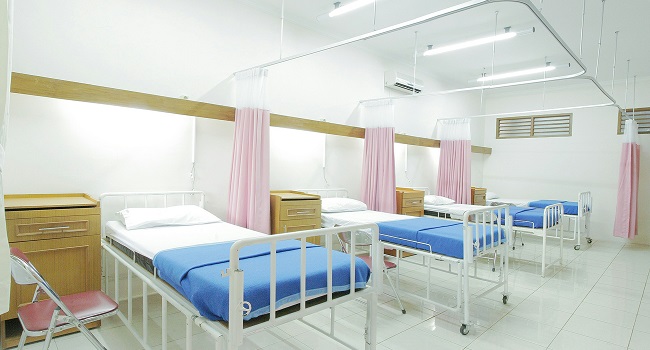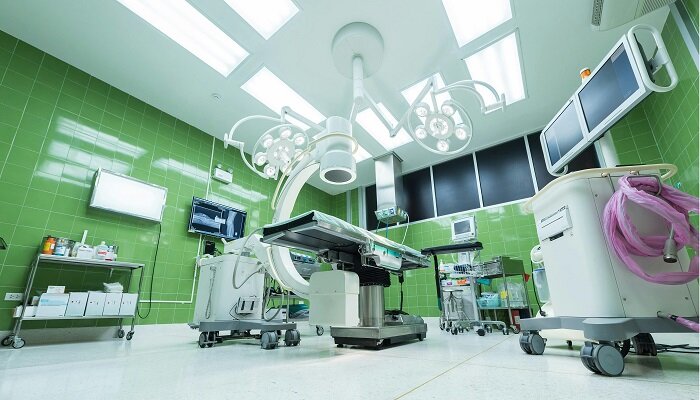In healthcare, the physical environment shapes patient experiences, staff productivity, and overall outcomes. A well-designed healthcare facility enhances efficiency and safety and contributes to patient satisfaction and well-being. This comprehensive guide will explore fundamental principles and strategies for transforming healthcare environments to promote efficient and safe patient care.
Understanding the Impact of the Healthcare Environment
The design of healthcare facilities encompasses a wide range of elements, including layout, lighting, color schemes, furniture, signage, and technology integration. Each of these components can significantly influence the patient experience and staff performance. For example, a cluttered and poorly lit environment may contribute to stress and anxiety among patients and staff. At the same time, a well-organized and welcoming space can promote a sense of comfort and security. Similarly, Pace procedure carts at every nursing station contribute to efficient workflow by providing easy access to essential medical supplies and equipment, reducing the time spent searching for items, and ensuring that caregivers have everything they need. Additionally, ergonomic furniture and adjustable workstations promote staff comfort and reduce the risk of musculoskeletal injuries, allowing healthcare professionals to focus on delivering quality care without physical discomfort.
Moreover, the physical layout of healthcare facilities can impact workflow efficiency and patient flow. Strategic placement of departments, treatment rooms, and amenities can streamline processes and minimize wait times, ultimately improving productivity and patient satisfaction. Thoughtful design considerations, such as centralized nursing stations and clear signage, can facilitate communication and collaboration among care team members, fostering a cohesive and coordinated approach to patient care. Additionally, incorporating designated spaces for collaboration and interdisciplinary meetings encourages teamwork and innovation, promoting a culture of continuous improvement and excellence in healthcare delivery.
1. Designing for Patient Comfort and Safety
Creating a patient-centered environment is essential for promoting comfort, dignity, and safety. Healthcare facilities should be designed with the needs and preferences of patients in mind, incorporating elements that enhance privacy, accessibility, and ease of navigation. Private patient rooms with ample natural light and comfortable furnishings can provide a sense of tranquility and promote healing. Additionally, incorporating adjustable beds, grab bars, and non-slip flooring in patient rooms and common areas can enhance safety, reducing the risk of falls. Special attention should also be given to furniture choices, such as a chair that prevents self-harm, ensuring that patients with specific vulnerabilities are not at risk while seated.
Effective wayfinding signage and transparent communication systems are essential for helping patients navigate the facility quickly and promptly access the care they need. Digital signage, interactive maps, and mobile apps can provide real-time information and guidance, empowering patients to navigate the healthcare environment confidently. Additionally, incorporating patient feedback mechanisms and involving patients in the design process ensures that healthcare facilities are responsive to their needs and preferences, fostering a sense of trust between patients and healthcare providers.
2. Enhancing Workflow Efficiency
Efficient workflow design is critical for optimizing staff productivity and resource utilization in healthcare settings. Healthcare organizations can implement design solutions that streamline workflows and improve operational efficiency by analyzing processes and identifying bottlenecks. One approach is to adopt a lean design philosophy, which focuses on eliminating waste and maximizing value in healthcare processes. This may involve reconfiguring layouts, standardizing equipment and supplies, and implementing technology solutions such as electronic health records (EHRs) and automated medication dispensing systems.
Furthermore, incorporating flexible and modular design features allows healthcare facilities to adapt to changing needs and accommodate future growth. Modular furniture, movable partitions, and modular building systems enable spaces to be reconfigured quickly and cost-effectively, minimizing disruptions and maximizing flexibility. Implementing workflow automation tools and digital solutions, such as barcode scanning for inventory management and real-time tracking of patient progress, can further streamline processes and reduce administrative burdens on staff, allowing them to focus on delivering high-quality patient care.
3. Integrating Technology for Seamless Care Delivery
Technology is vital in modern healthcare environments, facilitating communication, collaboration, and information exchange among care team members. Integrated technology solutions like telemedicine platforms, remote monitoring systems, and digital health records enable seamless care delivery and enhance patient outcomes. Intelligent building technologies can also optimize energy efficiency, maintenance, and security in healthcare facilities. Automated lighting and climate control systems, occupancy sensors, and building management software help minimize operational costs and ensure a safe environment for patients and staff.
Additionally, implementing telehealth platforms allows healthcare providers to deliver remote consultations and monitor patients’ progress outside of traditional clinical settings, expanding access to care and improving patient convenience. Leveraging artificial intelligence (AI) and machine learning algorithms can analyze vast amounts of data to identify trends, predict health outcomes, and personalize treatment plans, ultimately enhancing the quality and efficiency of care delivery. Furthermore, integrating wearable devices and mobile health apps empowers patients to actively participate in their healthcare journey by tracking their health metrics, managing chronic conditions, and communicating with their care team in real-time.
4. Promoting Sustainability and Wellness
Incorporating sustainable design principles and wellness initiatives into healthcare facilities benefits the environment and promotes health and well-being among patients and staff. Green building features, such as energy-efficient lighting, water-saving fixtures, and eco-friendly materials, reduce environmental impact and contribute to a healthier indoor environment. Furthermore, designing spaces that support physical activity, relaxation, and social interaction can promote wellness and improve patient outcomes. Outdoor healing gardens, fitness centers, and meditation rooms allow patients and staff to engage in activities that promote stress relief and overall well-being.
Moreover, implementing wellness programs and initiatives, such as healthy eating options and fitness classes, encourages positive lifestyle behaviors and supports holistic health. By prioritizing sustainability and wellness in healthcare facility design, organizations demonstrate their commitment to the environment and community well-being, fostering a culture of health and sustainability that benefits patients, staff, and the broader community. Additionally, incorporating biophilic design elements can further enhance the healing environment and promote connection with the natural world, ultimately contributing to improved patient outcomes and staff satisfaction.

Transforming healthcare environments for efficient and safe patient care requires a holistic approach, considering the needs of patients, staff, and the broader community. By integrating principles of patient-centered design, workflow optimization, technology integration, sustainability, and wellness, healthcare organizations can create environments that promote healing, enhance productivity, and improve outcomes for all stakeholders. Investing in the design and optimization of healthcare facilities is a strategic decision and a commitment to delivering high-quality care and fostering a culture of innovation and excellence in healthcare delivery.


















